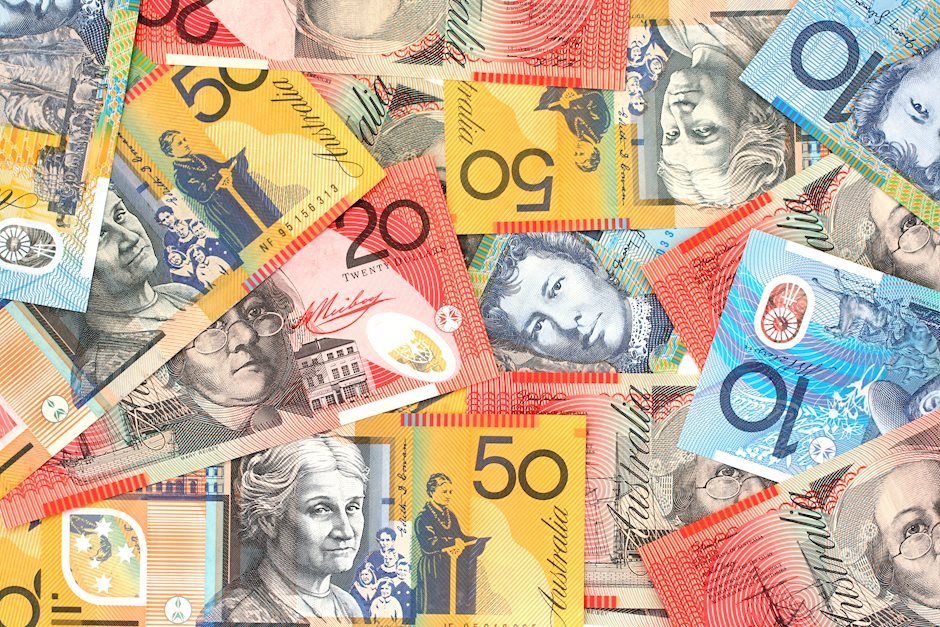AUD/USD Forecast: Near-term bias remains tilted in favour of bullish traders
- AUD/USD struggles to capitalize on its modest intraday gains to over a fresh multi-week high.
- Softer Australian GDP print and Chinese trade balance data act as a headwind for the Aussie.
- The RBA’s hawkish outlook lends some support amid subdued USD price action.

The AUD/USD pair enters a bullish consolidation phase on Wednesday and oscillates in a narrow trading band just below over a three-week high touched during the Asian session. Weaker-than-expected economic data from Australia and China turns out to be a key factor acting as a headwind for the major. The Australian Bureau of Statistics reported that real Gross Domestic Product (GDP) grew 0.2% in the first quarter – the weakest pace in 18 months and down from 0.5% in the previous quarter. Furthermore, the annual growth rate also missed forecasts and came in at 2.3%. Meanwhile, China's trade surplus sank to a 13-month low in May, led by a surprise tumble in exports. The data suggested that overseas demand for Chinese goods remained weak in the wake of worsening economic conditions globally, posing additional headwinds for the world's second-largest economy and capping the China-proxy Aussie.
The downside for the AUD/USD pair, however, remains limited on the back of the Reserve Bank of Australia's (RBA) surprise 25 bps rate hike on Tuesday and a more hawkish policy statement. In fact, RBA Governor Philip Lowe on Wednesday defended the move to lift the benchmark rates above 4% for the first time in nearly 12 years and reiterated that interest rates may need to rise further in order to curb overheated inflation. This, along with subdued US Dollar (USD) price action amid the uncertainty over the Federal Reserve's (Fed) rate-hike path, acts as a tailwind for the major. Several Fed officials last week backed the case for skipping an interest rate hike in June. In fact, markets are pricing in a greater chance that the US central bank will keep rates steady at its upcoming policy meeting on June 13-14, though the recent inflation and labour market data keep hopes for a 25 bps lift-off alive.
Hence, the focus will remain glued to the highly-anticipated FOMC decision next Wednesday, which will play a key role in influencing the near-term USD price dynamics and provide a fresh directional impetus to the AUD/USD pair. In the meantime, a further decline in the US Treasury bond yields keeps the USD bulls on the defensive and might continue to lend support to the AUD/USD pair. Moreover, the aforementioned fundamental backdrop seems tilted in favour of bullish traders and suggests the path of least resistance for spot prices is to the upside in the absence of any relevant market-moving economic data from the US.
Technical Outlook
From a technical perspective, the AUD/USD pair has struggled to build on the post-RBA rally beyond the 61.8% Fibonacci retracement level of the downfall witnessed in May and remains capped near the 200-day Simple Moving Average (SMA). This barrier, pegged just ahead of the 0.6700 round-figure mark, should act as a pivotal point, which if cleared decisively will be seen as a fresh trigger for bullish traders. Spot prices could then make a fresh attempt to conquer the 100-day SMA, around the 0.6745-0.6750 region. This is followed by the May monthly swing high, around the 0.6780 region. Some follow-through buying beyond the latter will set the stage for a further near-term appreciating move.
On the flip side, any meaningful pullbacks might find decent support near the 50% Fibo. level, around the 0.6640 region. A further decline is more likely to attract some dip-buyers, which should help limit the downside near the 0.6600 mark – representing the 38.2% Fibo. level. A convincing break below the latter will negate any near-term positive bias and make the AUD/USD pair vulnerable. The downward trajectory might then drag spot prices to the 0.6545-0.6450 region (23.6% Fibo.) en route to the 0.6500 psychological mark and the YTD low, around the 0.6460-0.6455 zone touched last week.
Premium
You have reached your limit of 3 free articles for this month.
Start your subscription and get access to all our original articles.
Author

Haresh Menghani
FXStreet
Haresh Menghani is a detail-oriented professional with 10+ years of extensive experience in analysing the global financial markets.


















